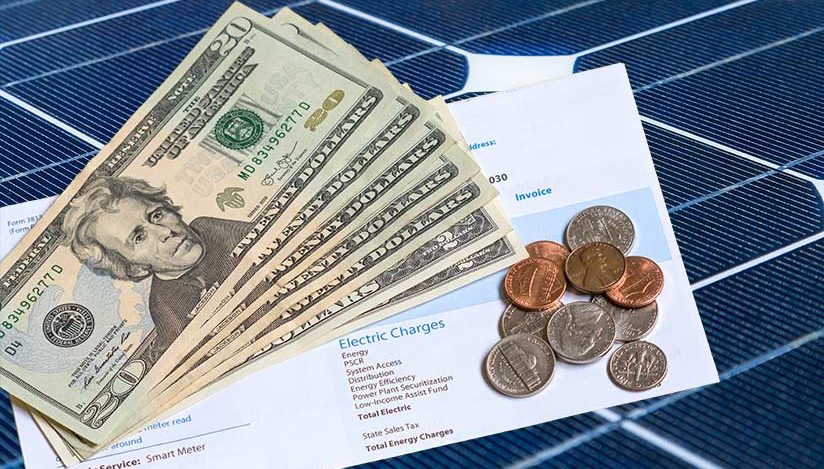How Much Does Electricity Cost from Solar Panels vs. Your Local Utility?
Our customers are often concerned about the upfront cost of buying a solar power system. This hesitation is completely understandable. After all, solar is a significant long-term investment. But that’s just it—it’s an investment.
There’s an analogy we’ve used with customers on occasion:
Imagine that back in 1994, when gas was about $1.15 a gallon ($1.96 with inflation), you buried the tank from an 18-wheeler in your backyard. If you could have used that gas for your cars for the next 25 years, right up to today, would you have been happy with your investment?
The answer is always an emphatic “Yes!” Two bucks a gallon would feel like a steal these days, even when prices aren’t bad—to say nothing of the times over the past couple decades when prices have risen towards $5 per gallon.
Solar is the just about the exact same thing (without the risk of having thousands of gallons of gas in your backyard!). Just like that tanker, solar power requires an upfront investment. But the savings will far exceed the initial cost.
How much does electricity produced by solar panels cost?
To estimate what electricity from a solar power system will cost—effectively, what the owner’s ‘electricity rate’ will be—requires understanding how much electricity the system will produce over its lifetime. That depends upon the system in question, of course, as different brands of solar panels degrade at different rates over time.
For instance, SunPower now guarantees that their panels will degrade at such a slow rate that even after 25 years, the panels will produce 92% of their original capacity.
When we produce an energy estimate, we take a conservative approach. We assume that the system will meet the warranty’s minimum guarantee for a period of 25 years, calculate how much electricity it will produce during that time, and divide that figure by the cost of the system. Depending on the specifics of the system, solar-sourced electricity works out to around 8 to 12 cents per kWh (kilowatt-hour) over the life of the system.
In many cases, especially with SunPower, that estimate is much closer to 8 cents than 12. And remember, that doesn’t take into account that many SunPower systems will continue to operate well into their 30s, and have a good chance of operating at 90% of original capacity at the 40-year mark. Potentially, you could pay a lot less than what we estimate, but we like to err on the side of caution.
So, the rule of thumb is that at worst, you’ll pay 8 to 12 cents per kWh for electricity produced by your solar power system.
How much will electricity produced by a local electrical utility cost long-term?
We’ve discussed in pretty exhaustive detail how we project how much electricity produced by PG&E and SMUD will cost long-term. But to keep it brief, according to PG&E’s 2019 time-of-use rate schedule, the average summer rate is 36 cents per kWh, and the average for winter is 27 cents/kWh.
Right off the bat, electricity from solar power is less than half the winter rate, and a third of the summer rate. And that’s today.
If you’re reading this in 2020 or 2022, then that rate is going to be higher. When your solar power system is still putting power out in 2044, you can bet that rates will be higher still. We currently estimate that SMUD’s rates will increase by 3.7% per year, while PG&E’s will increase by 5% per year (assuming, of course, that bankruptcy doesn’t affect that figure).
You might be surprised by how quickly that adds up. A $200 SMUD bill in 2019 will cost $414 in 20 years, and a $200 PG&E bill will cost $531. How comfortable are you about the idea of paying energy bills that cost twice as much, or more?
Remember that metaphorical tanker truck we talked about earlier? Would you rather start saving money now by locking low energy rates in with a solar power system, or wait until your energy bills double, just like gas costs have over the past couple decades?

